Tokyo Central Station opened on December 20, 1914 as the starting point of the Tokaido Main Line.
However, construction of the Tokyo Station Hotel was delayed due to debate over whether or not to even build a hotel. It opened the following year on November 2, 1915.
Initially, hotel management and operation was outsourced to the Tsukiji Seiyoken Hotel. After Seiyoken’s Tsukiji hotel was lost to fire in the Great Kanto Earthquake and business deteriorated, the service system of the Station Hotel also deteriorated and became a problem. Seiyoken’s management was terminated toward the end of 1933.
The Ministry of Railways then stepped in to operate the hotel, and it reopened as the Tokyo Railway Hotel shortly thereafter on December 27, 1933.
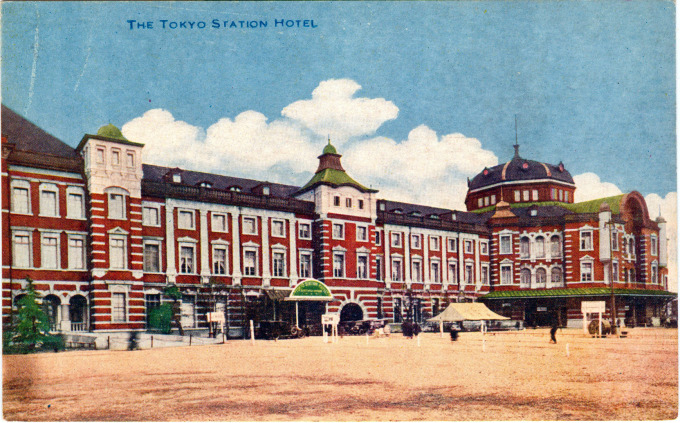
A green awning locates the entrance to the Tokyo Station Hotel, c. 1920. To its left you can see, roped off, the Emperor’s personal entrance to the terminal.
See also:
Tokyo Central Station, c. 1914-1940
Tokyo Central Station, c. 1945-1960

Second-floor parlour (lobby), Tokyo Railway Hotel, Tokyo, c. 1940, renamed after its management had been shifted to the Ministry of Railways in the early 1930s from the privately-owned Tokyo Station Hotel.
“The Tokyo Station Hotel, with 60 rooms, is in the Tokyo Central Station. It’s as handy as any place could be, especially for those who arrive by train from Yokohama. It is definitely a humbler place, and cheaper, than many [of the other Western hotels in Tokyo] but it is entirely suitable for thrift-budget travel.”
– All the Best in Japan, Sydney Clark, 1958
- Tokyo Station Hotel dining room, c. 1920.
- Saloon and billiards room, Tokyo Station Hotel, Tokyo, c. 1920.
- Tokyo Station Hotel suite, c. 1920.
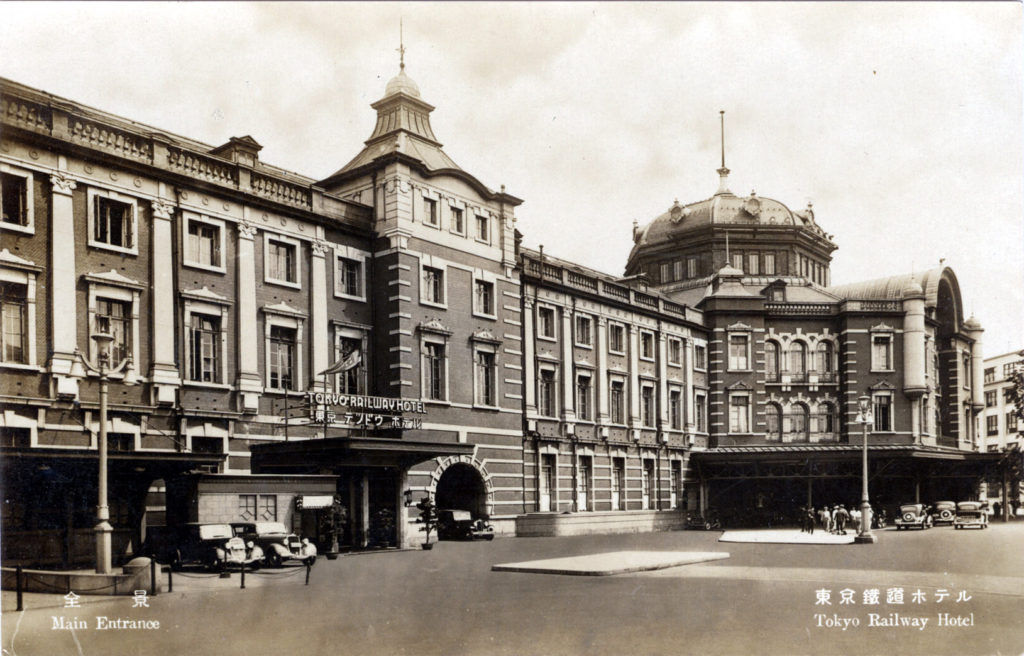
Tokyo Railway Hotel (Tokyo Tetsudo Hoteru), Tokyo, c. 1940. Opened in 1915, a year after the opening of Tokyo Central Station, the Tokyo Station Hotel was a European-style hotel that showcased magnificent architecture and state-of-the-art (for its time) facilities and banquet rooms. The hotel entertained 4,500 foreign guests and 2,500 Japanese guests in the first half of 1917.
“When first built, Tokyo Central Station was a three-story building topped with ornate cupolas. But on May 25, 1945, the city was the target again of an incendiary raid by B-29 bombers. The raid destroyed a large commercial areas of Tokyo, including Ginza and Nihonbashi. The station lost its impressive rooftop domes, as well as most of the third floor of the building and much of its interior. The brick walls and concrete floors mostly survived.
Aerial view of Tokyo Station, 1945. The entire third level of the terminal (right) was destroyed in the May, 1945 firebombing of the capital.
“Reconstruction of the building finished by 1947, the restored building retaining only two stories instead of three with simple octagonal roofs built in place of the original cupolas. (These postwar alterations were blamed for creating the mistaken impression that the building was based on the Central station in Amsterdam.) During the Occupation the hotel was considered more of a popular coffee bar than a place of temporary lodging.
“Management of the hotel shifted during the Occupation from the Ministry of Railways, which was no longer allowed to directly operate the hotel, to to the Japan Travel Bureau Corporation then, in 1950, the Nippon Hotel Co., Ltd. was established as the hotel’s operating company. The name of the hotel was also changed back to Tokyo Station Hotel.
“In 2003 , the red brick station building, including the hotel, was designated an Important Cultural Property. The hotel closed for business in 2006 in anticipation of a complete restoration of the whole terminal back to its original pre-war appearance. Restoration work was completed on October 1, 2012, and the hotel reopened for business two days later with an increase in guest rooms from its postwar capacity of 58 rooms to 150 rooms following reconstruction.”
– Wikipedia


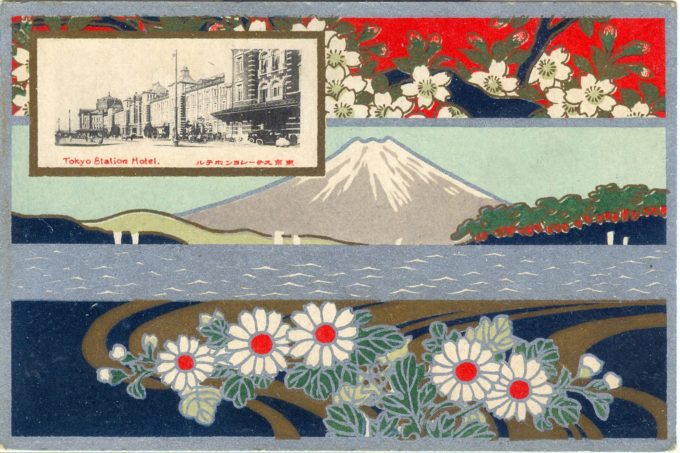
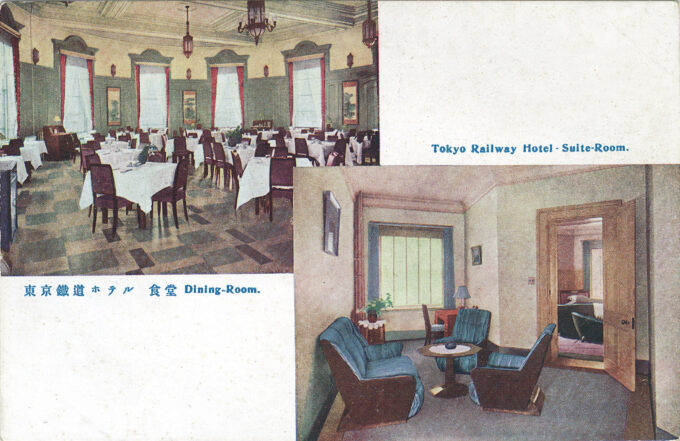
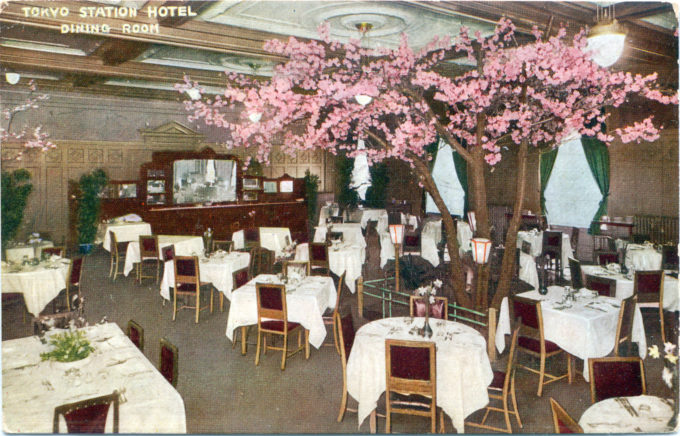
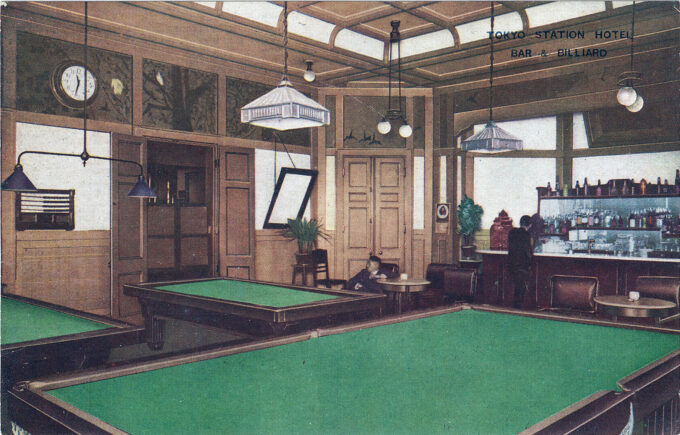
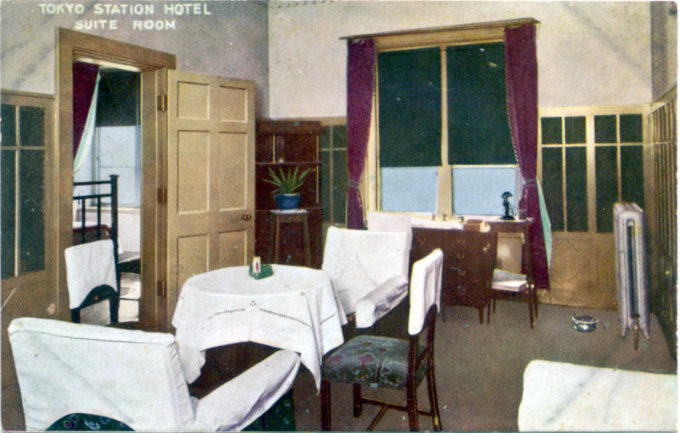
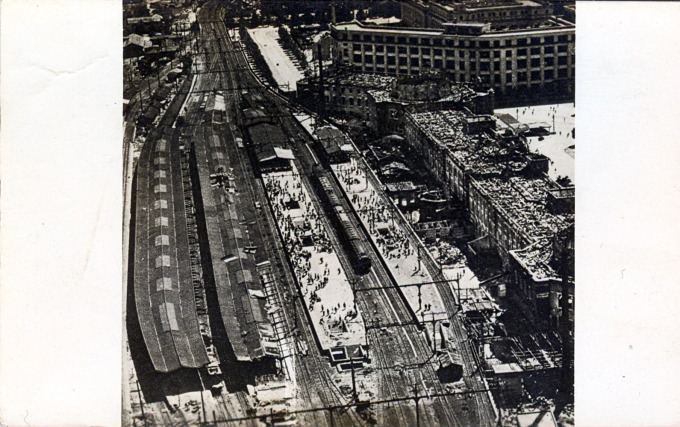
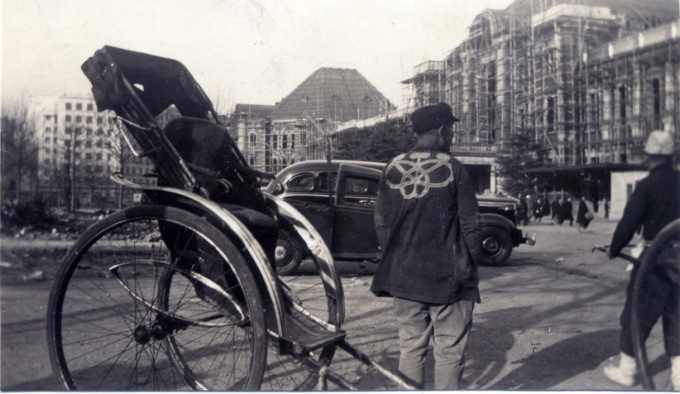
Pingback: Tokyo Station, 1914-1940. | Old Tokyo
Pingback: “The Emperor’s Entrance”, Tokyo Central Station, Tokyo, c. 1920. | Old TokyoOld Tokyo